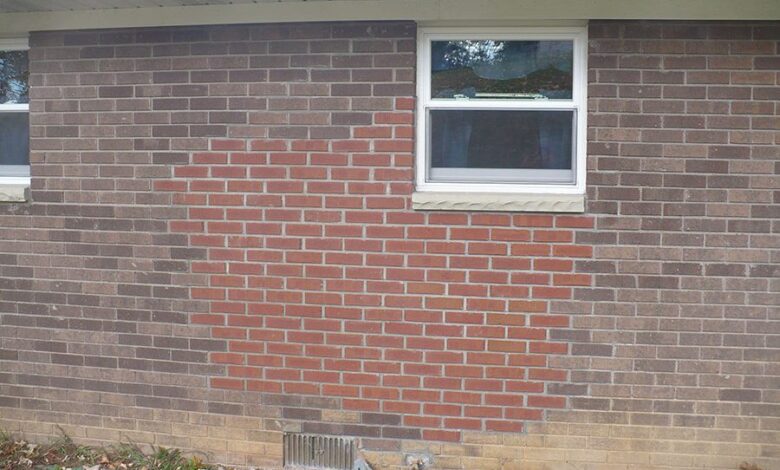The Basics of Masonry Waterproofing for Long-Lasting Structures

Masonry waterproofing protects brick, stone, and concrete structures from water penetration. This practice ensures that moisture does not seep through masonry walls, preventing severe issues such as mold growth, material deterioration, and structural damage. Investing in proper masonry waterproofing solutions is crucial to safeguard your structures and stand the test of time.
Water can infiltrate your masonry work without effective waterproofing, leading to cracking, spalling, and other damage that compromises the structure’s integrity. Over time, these issues can escalate, resulting in costly repairs and potential safety hazards. A well-executed waterproofing system is a robust defense against these challenges, safeguarding residential and commercial towers from premature deterioration.
Benefits of Masonry Waterproofing
The benefits of masonry waterproofing are numerous, extending beyond mere aesthetic appeal. Functional advantages include prolonged structural lifespan, improved indoor air quality, and enhanced resistance to environmental factors such as freeze-thaw cycles. By keeping water out, waterproofing helps maintain the structural integrity of masonry over the long term. For example, a waterproof building is more likely to resist mold growth, which poses health risks and considerately impacts indoor air quality.
Furthermore, waterproofing elevates the overall value of your property. Potential buyers and tenants regard this as a crucial feature for durability and maintenance. A waterproof structure is more likely to attract positive attention in the real estate market, thereby enhancing its market value. By minimizing the risk of water-related damages, masonry waterproofing also reduces recurrent repair costs, offering a wise, long-term investment that pays off immediately and in the future.
Methods of Masonry Waterproofing
Several methods can be employed for effective masonry waterproofing, and choosing the right one depends on your structure’s specific requirements and the prevailing local climate. The primary methods include surface treatments, integral systems, and drainage assemblies. Each technique offers unique advantages and is suitable for different buildings and environments.
Surface Treatments
Surface treatments involve applying a protective layer directly onto the masonry surface. This layer can include sealants, paints, or other coatings designed to repel water while allowing the structure to breathe. These treatments are relatively easy to apply and can be used on new and existing structures. They act as a first line of defense, preventing water from penetrating the exterior surfaces.
Integral Systems
Integral systems incorporate waterproofing compounds into the masonry materials. These compounds react chemically within the material to create a barrier that stops water penetration. This method is particularly effective for new constructions, providing long-lasting protection from within. Since the waterproofing elements are embedded in the masonry, the structure is protected from internal and external water damage.
Drainage Assemblies
Drainage assemblies redirect water away from masonry structures through channels or membranes. This technique works exceptionally well in places with heavy rainfall or groundwater problems. Drainage assemblies help preserve the structure’s integrity by effectively controlling water flow and preventing water buildup around the foundation, which can result in serious long-term problems.
Signs That Your Masonry Needs Waterproofing
Recognizing the signs of water damage early can save you from costly repairs. Key indicators include visible water stains on the walls, ceilings, and floors. Mold growth is another sign that your masonry might need waterproofing. Mold not only affects the appearance of your structure but also poses health risks to the occupants. Efflorescence, which appears as white, powdery deposits on the masonry surface, is another common sign of water infiltration. If you notice any of these issues, consider professional waterproofing services to address the problem and protect your structure from further damage.
Maintenance Tips for Waterproofed Masonry
Once your masonry is waterproofed, regular maintenance is essential to extend its lifespan. Regular inspections can assist in spotting possible issues before they worsen. Look for evidence of wear and tear during these inspections, such as paint peeling or sealant cracks. Because dirt and debris can trap moisture and cause water damage, keep the surface clean and clear of them. Reapply sealants as necessary to guarantee ongoing defense. Furthermore, it’s essential to ensure drainage systems operate correctly to avoid water buildup near the foundation. By adhering to these maintenance recommendations, you can significantly lower the possibility of structural damage and increase the lifespan of your waterproof masonry.
Conclusion
Masonry waterproofing is essential for protecting brick, stone, and concrete structures from water damage, ensuring their longevity and structural integrity. The benefits of waterproofing extend beyond aesthetics, enhancing indoor air quality, reducing repair costs, and increasing property value. Various methods, including surface treatments, integral systems, and drainage assemblies, offer tailored solutions for different environments and structures. Recognizing signs of water damage early and conducting regular maintenance are crucial for the long-term effectiveness of waterproofing. They invest in proper masonry waterproofing to safeguard your property against water-related issues, providing peace of mind and durable protection.



